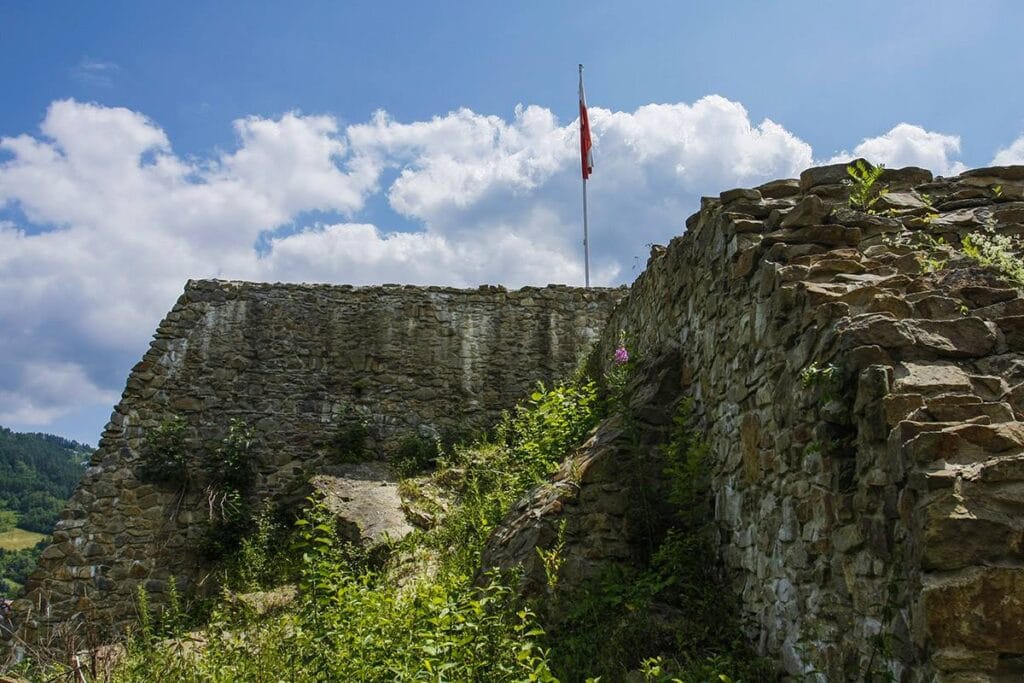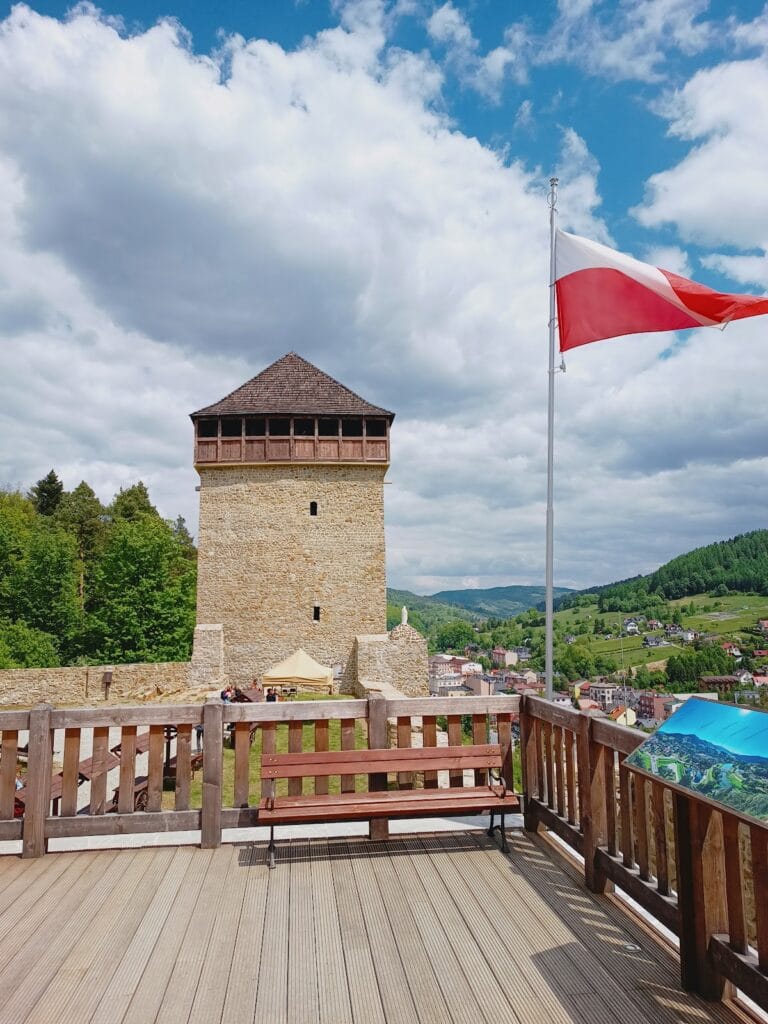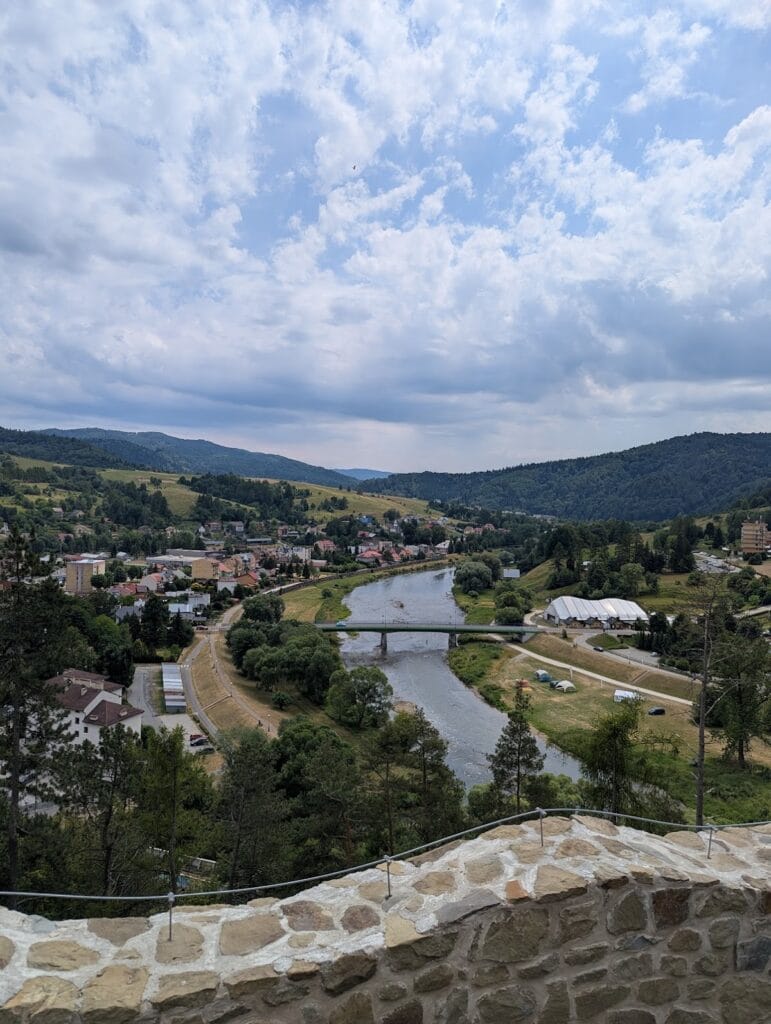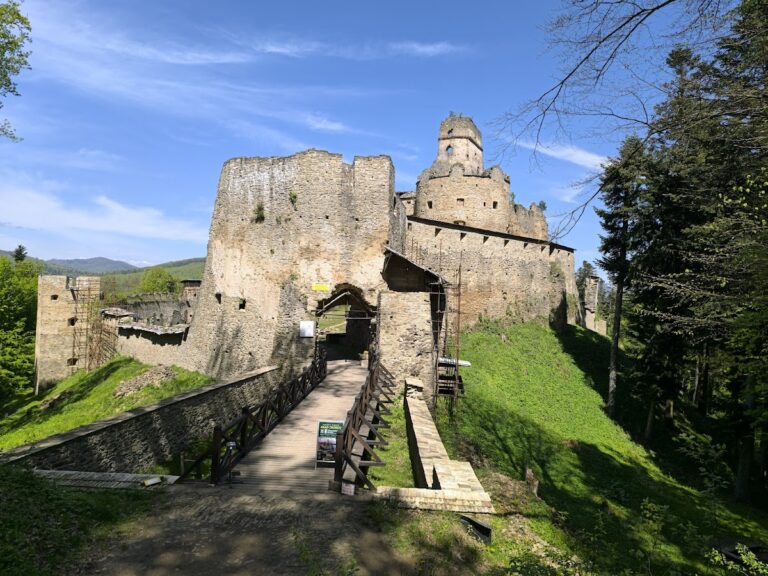Muszyna Castle: A Medieval Fortress in Poland
Visitor Information
Google Rating: 4.5
Popularity: Medium
Google Maps: View on Google Maps
Official Website: muszyna.pl
Country: Poland
Civilization: Medieval European
Remains: Military
History
Muszyna Castle is a medieval fortress situated in the town of Muszyna, Poland, built by the local Slavic and Polish authorities during the Middle Ages. Its position on a steep hill overlooking the confluence of the Poprad River and two smaller streams made it a strategic site guarding a vital trade route between Poland and Hungary.
The earliest references to the Muszyna estates date back to 1301, when King Władysław of Hungary granted the lands, including a fortress called Płoche, to Bishop Jan Muskata of Kraków. According to tradition, the foundation of a royal stronghold in Muszyna dates from this early 14th century period, although the precise location of the initial fortification is uncertain. Some evidence indicates the original castle might have been situated either on Baszta hill, where the present ruins stand, or on a nearby higher peak in the Koziówka range. Over time, the property changed hands between secular and ecclesiastical control; by the late 14th or early 15th century, it was restored to the Kraków bishops under King Władysław Jagiełło or possibly Bishop Zbigniew Oleśnicki in 1440.
In 1474, the older fortress suffered destruction at the hands of forces led by Matthias Corvinus, King of Hungary, and Tomasz Tarcz from Lipiany. Following this devastation, a new castle was constructed at the turn of the 15th and 16th centuries to replace the ruined fortification. Its primary purpose was to defend the Polish-Hungarian border and protect the important trade passage along the Poprad River. Serving as the residence for the starosts—local officials—of the Muszyna territory, the castle was at the center of an autonomous administrative district known as the Muszyna key or borderland, which had its own governance, military forces, and courts under the Kraków bishopric’s authority until the partitions of Poland in the late 18th century.
During the 17th century, under the reign of King Jan Kazimierz, the castle continued to fulfill defensive roles. However, in the latter half of the 18th century, it was abandoned and gradually fell into ruin. By the 19th century, historical artists such as Maciej Bogusz Stęczyński and Napoleon Orda captured images of the castle in its decayed state, with particular attention to the surviving tower. Archaeological investigations carried out in the 1960s by scholars including Andrzej Żaki and M. Fraś provided further insight into the site’s complex history.
Between 2020 and 2023, extensive renovations supported by European Union funding allowed the partial reconstruction of the castle, reviving key structural elements like the main tower and residential spaces while preserving its historical significance.
Remains
Muszyna Castle occupies a roughly rectangular courtyard enclosed by defensive walls built using an old masonry technique known as mauergusswerk. This construction method involves dressing stones on one side and binding them together with rubble and lime mortar, resulting in solid yet somewhat uneven walls. The northern section of the site is dominated by a large quadrangular tower, originally reinforced by buttresses to strengthen its thick stone walls. This tower, known as a bergfried—meaning the main defensive tower—stood as the castle’s principal lookout and stronghold.
Within the courtyard, archaeologists have identified a deep well carved directly into the bedrock, indicating the castle’s capacity for self-sufficiency during sieges. The eastern side housed a residential building divided into two distinct sections that enclosed the courtyard, suggesting accommodations for the castle’s occupants. On the southern perimeter, a double defensive wall created a narrow, elongated inner courtyard, enhancing the castle’s layered fortifications.
In the 19th century, despite the castle’s ruinous condition, one notable feature was a chimney embedded in the tower’s thick wall. It was constructed by encasing a large round log, approximately 15 inches in diameter, which was gradually raised to form a passage for smoke. This crude but practical adaptation demonstrates the reuse and modification of medieval structures even during their decline.
Throughout the 20th century, the tower ruins survived in a fragmentary state and were documented up until at least 1908. Recent reconstruction efforts have restored the quadrangular bergfried to a height of approximately 14 meters, topping it with a glazed rooftop platform. These works also included rebuilding parts of the courtyard walls and the main residential building, allowing for new use of these spaces. Inside the restored tower, a café and a permanent exhibition now present the history of Muszyna Castle and the surrounding town, connecting visitors to the fortress’s medieval past.
Historical depictions by 19th-century artists record the castle’s ruinous state before modern restorations, providing valuable visual context for its architectural evolution and condition. The castle’s location on a hill overseeing the meeting point of the Poprad River and its tributaries highlights its role in controlling important medieval trade routes between Poland and Hungary.










